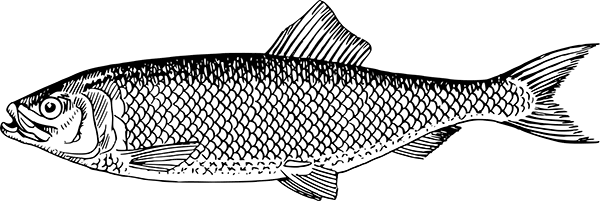A brief history of the sporadic ‘herring periods’ on Sweden’s Bohuslän coast and whether they’re caused by sunspots or food availability
BOHUSLÄN FISHERY
The herring shoals come and go off Sweden’s Bohuslän coast, north of Göteborg. The ‘herring periods’ are related to the Skåne Fishery experience. Of varying durations, they are exploited in the clear knowledge that the herring will go and it will come to an end. The most celebrated of these fisheries lasted from 1747 to 1809. The catch was mostly used in the production of fish oil.
The Sensitivities of the Herring
Considerate towards the herrings’ sensitivities and hoping against hope, towards the end of this C18th/19th visitation, the Swedish government sought to extend it by banning the dumping of herring carcases in the sea. They dug great pits to house the waste. When the fish left anyway, the Swedes blamed British men-of-war for upsetting them with canon fire.
Sunspots
Another period, between 1877 and 1906 led to the suggestion by the Swedish herring scientist Ljungman, that the arrivals and disappearances were related to the 111 year sunspot cycle. Mathematics might have hinted at a basic flaw in the argument, but the inherent principle of astronomical influence was taken forward by Petterson and Ekman, who explored the predictability of resulting variations in salinity and temperature associated with the phenomenon of internal waves. The problem with this was that these waves were vertical oscillations of water and could not explain the movement of the largely passive young herring stock.
Whose Fish Are They Anyway?
There was another very short Bohuslän invasion between 1963 and 1965. Noticing that these periods alternated with the experience of abundance along the west coast of Norway, the Norwegian scientist Devold argued quite reasonably, that, for whatever reason they came, they were Norwegian spring spawners. By digging up the skeletons of the eighteenth century fishery, conveniently preserved in huge numbers in the anoxic conditions of the Swedish government’s burial pits, the Swedish scientist Höglund (1972) proved that they were, on the contrary, North Sea herrings (see Racial Theory).
When the herrings went away, the Bohuslän fishermen went further afield. They were regulars on the Icelandic herring fishing grounds, originally developed by the Norwegians in the early C20th.
Calanus finmarchicus
The late 1990s saw further investigations into the coincidence of Bohuslän herring periods with cold winters over Western Europe. The Dutch herring academic Ad Corten argues that the movements are associated with ‘negative phases’ of the North Atlantic Oscillation (a ‘multi-annual variation in the mean atmospheric pressure distribution’ if you were wondering). These produce strong easterly winds during the autumn, driving surface water out from the Skagerrak and consequently encouraging the sub-surface counter current.
Juvenile herrings (see Life Cycle) feeding off the coast of Jutland on zooplankton (in particular Calanus finmarchicus) are still not strong enough to resist the current. And anyway, if the zooplankton is also drifting in that direction…
Once off the Bohuslän coast, a particular herring recruitment returns year after year, even though, as stronger swimmers, this represents an active selection. Calanus finmarchicus just drifts, however: subsequent recruitments drift with it.
